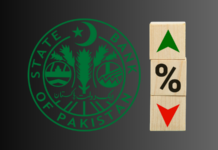Before every major interview, summit, seminar, award night, or work dinner, there is one whatsapp message I always find myself sending. What should I wear? The thought is always there and it is always directed towards my colleague Meiryum or other working women I am friends with.
Why do I put myself through this ritual no matter what? It isn’t because I doubt my fashion skills. It isn’t because I can’t pick out my own clothes. It isn’t vanity. Everytime I ask because for women there is no knowing what is considered appropriate formal wear for women on different occasions.
You see, this is another one of those places in which men have it far too easy. A typical day at work? A collared shirt and formal pants. Business casual? A polo and khakis. A formal event? Throw on a suit, or if you’re feeling really crazy, pair a dress shirt and pants with a blazer. Work clothes for men are very simple, and they have been defined over the years. The playing field is a little different for women, particularly in Pakistan.
For men, the definitions of formal are very easily covered by the way western formal wear is defined. For women in Pakistan, it is completely different because eastern clothes do not have a defined formality to them for different occasions, which is why it could not be a more complex field to navigate than it is right now.
The current scenario
This is about it. What do women wear for work in Pakistan and how is that different from what they usually wear? In most cases, the vast majority of women wear Lawn ka Jora to work. Doesn’t matter if they have flowers, vibrant colors, bold prints, or lots of embroidered motifs. That’s just considered the regular. However, that is essentially what they wear at home, when visiting a friend’s house, going to the mall, or eating out. A lawn ka jora proves to be both formal enough for a regular day at work and casual enough for everything else you plan on doing.
That, however, doesn’t always feel right. Especially considering the prints. To make it seem more formal, I have personally started wearing monochrome or solid colored outfits with little to no motifs and prints. It does, however, get difficult to manage and of course it does get boring if you’re literally just wearing the same outfit in different colors.
Work wear is very easy in most countries considering the dress codes are clearly outlined. If you’re expected to wear formal clothing, you wear a suit or just a buttoned shirt with pants. If you’re allowed to look slightly more casual at work, you could wear a turtleneck or a plain t-shirt. Maybe even jeans, but that depends on where you work.
Is this problem across the board?
What’s interesting is that if you work at an MNC, one of the bigger banks, and at cooler startups, you’re not judged for wearing western clothes to work. Suits, formal shirts with pants aren’t frowned upon. That isn’t the case across the board because in Islamic banks, some brokerage companies, and companies where boomers are on the board, western wear, including suits, is not allowed for women.
As someone that interviews, networks and meets various people and various offices, I often find myself dressing up based on whether they are comfortable with me walking in wearing a suit or not.
Similarly, if we ignore everyday office wear and talk about events. Those prove to be even more challenging to dress for. While men simply just put on a suit, it’s not that easy for women. You could go for your trusted lawn ka jora that works in every situation but how do you make it seem more formal or even appropriate in comparison to the lawn ka jora you wear everyday. This is one problem I face when dressing up for an awards ceremony earlier this week.
While what you wear is a private matter, one can’t help but stress on the fact that dressing up well has a positive effect on your performance, confidence, and demeanor. If you feel you’re not dressed for a work meeting or event, you’re going to be conscious and definitely not bring your a-game.
The opportunity
The Pakistani fashion industry focuses plenty on bridal couture and collection after collection of lawn suits. However, the industry rarely introduces variety or innovation for working women. This of course is not restricted to just clothes but other accessories as well such as work appropriate shoes as opposed to the stone studded chappal that you should wear to a party and not work.
The female labor force participation rate rose from under 16% in 1998 to a peak of 25% in 2015 before declining slightly once again to 22.8% by 2018. That means there are millions of women who are currently working who might not have been, had labor force participation rates for women stayed the same.
The total number of women in Pakistan’s labor force – earning a wage outside the home – rose from just 8.2 million women in 1998 to an estimated 23.7 million by 2020, according to Profit’s analysis of data from the Pakistan Bureau of Statistics. That represents an average increase of 4.9% per year compared to an average of just a 2.4% per year increase in the total population. In short, the growth in the number of women entering the labour force is more than twice as high as the total rate of population increase.
While not all these women work in the corporate sector, the fact that this segment is rising and has purchasing power means more brands need to step up for working women. Spending on clothing has risen much faster than spending on other categories, rising by an average of 13.5% per year for the past 15 years. Readymade garments are, by far, the fastest growing segment of consumer spending on clothing and footwear. In 2019, readymade clothes account for 37% of total consumer spending on clothing in Pakistan.
The solution
All this means that there is a market out there that needs to be tapped into. While some brands launch a small collection that is for work wear, that is simply not enough or vast enough to actually be considered as dedicated work wear. Not only do brands need to cater to this segment but they need to realize prints, flowers just don’t look professional. While I do not aim at looking down at the women that wear those, I can’t help but draw inspiration from women like Dr Shamshad Akhtar, Hina Rabbani Khar, and of course Sima Kamil and how they’ve managed to maintain a professional appearance throughout their careers.
Another thing that needs to be said is the wearing of western wear at work shouldn’t be demonized for women especially in a corporate world where men are expected to wear nothing but western wear. It shouldn’t be used as a radar for morality.
In the end, I’d like to say that the reason behind writing this is because in a world where women are rarely taken seriously even when they rise the ranks to the top, the way they look sometimes plays a role in that. When you look professional, you are taken seriously. So if all us women can determine what the right work and event wear is as a working woman, that would be great!

























Ariba you said exactly what I’ve been thinking for quite some time now. I will soon be joining the corporate sector and I fully recognize this existing gap in the market. Planning to fill it myself one day InshAllah.